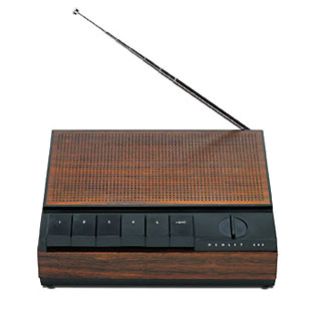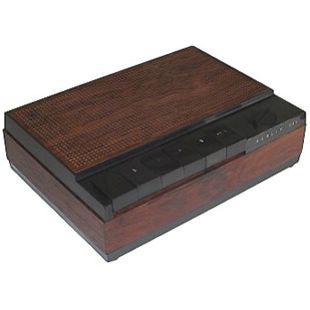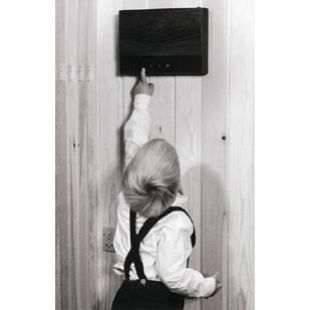Beolit 500 Portable Radio (1965)
Manufactured: 1965 - 1969
Designer: Acton Bjørn and Sigvard Bernadotte
Colours: Rosewood
In the 1960's, small, transistorised radios became extremely popular. This was a result of miniaturisation of electronics products. The world leaders on the road to miniaturisation as we know it today, were the Japanese. Bang & Olufsen eager to come up with its own idea of making products smaller, designed its own transistorised radio: the Beolit 500.
An FM transistor set, entirely without dial, with push-button selection of up to five pre-tunable stations. The Beolit 500 has a large high-performance speaker, a telescopic FM whip, jacks for tape recorder, gramophone and extension speaker, automatic frequency control, and good battery economy. An attractive extra feature: the Beolit 500 can be used as an intercom system. Dimensions: 76 mm high, 264 mm wide, 191 mm deep. Choice of teak or Brazilian rosewood finish. Not available in the UK.
Beolit 500, type 1101 is one of those so-called 'transistor radios' - a small portable radio that could be carried around. However, Bang & Olufsen worked on the assumption that these small 'portable' radios were most often stationary. As well as an FM radio receiver, Beolit 500 could be used as an intercom via an extra loudspeaker (that it could also be adapted to receive police radio communications by short-circuiting a couple of switches was an entertaining, but unintentional side-effect).
Sockets for an external 7.5V power supply (via Beopower 600) and a tape recorder were fitted.
Beolit 500 won the iF Design Award in 1966.
Beolit 500 Portable Radio (1965) Product Specifications
Would you like to write a review of this product? Do you have any Technical Specifications?
If so - please forward them to us so we can add them to our database and share them with fellow Bang & Olufsen enthusiasts around the world. Your name will also appear in the Author Notes section at the bottom of the page!
BeoWorld | Everything Bang & Olufsen
Created: 21st January 2007
Modified: 27th February 2007
Author Notes:







